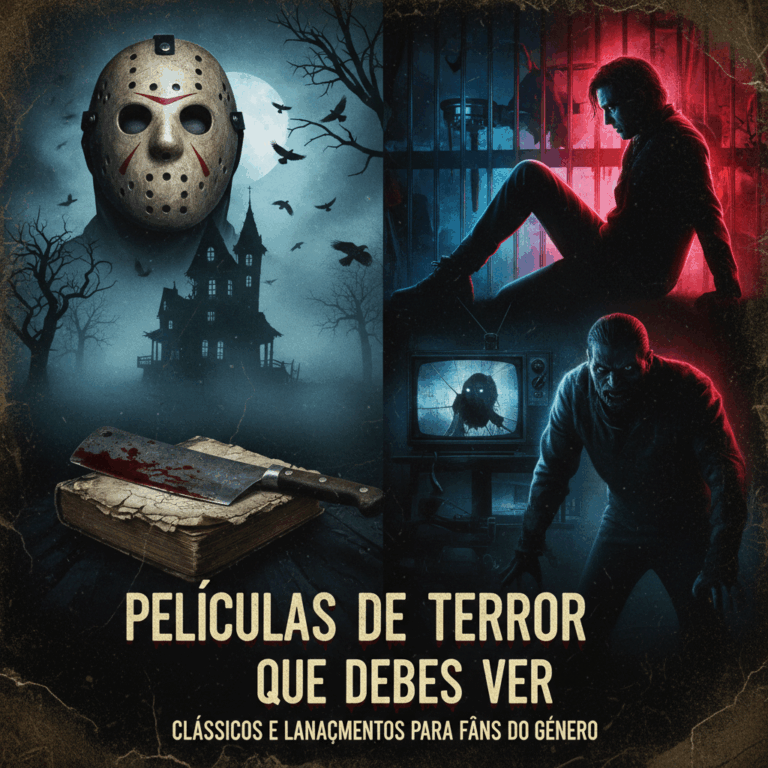Essential classic horror movies
Classic horror films are essential to understanding the evolution of the genre and its many facets. These movies not only instilled fear but also marked cultural milestones.
Works such as "The Exorcist" and "Halloween" transformed the way terror was portrayed, generating lasting influences on generations of filmmakers and viewers eager for strong emotions.
These essential films have left an indelible mark, paving the way for new thematic and stylistic explorations within the genre.
Influences and contributions of “The Exorcist” and “Halloween”
“The Exorcist” elevated supernatural terror to a level of realism never before seen, combining anguish with religious themes that deeply impacted audiences.
On the other hand, “Halloween” popularized the slasher subgenre and established Michael Myers as a horror icon, with its tense atmosphere and innovative use of suspense.
Both films broke the mold and established narrative and aesthetic models that served as inspiration for future creators and franchises.
Impact of “A Nightmare on Elm Street”, “The Shining” and “Night of the Living Dead”
“A Nightmare on Elm Street” introduced dreamlike horror through the character of Freddy Krueger, a threat that lurks in dreams, combining creativity and psychological fear.
“The Shining”, directed by Stanley Kubrick, stood out for its oppressive atmosphere and the intense performance of Jack Nicholson, creating a disturbing and unforgettable environment.
“Night of the Living Dead” laid the foundation for zombie cinema and added a profound social critique, giving rise to a subgenre that remains relevant and constantly evolving.
New trends and prominent directors
Contemporary horror cinema has undergone a renewal, with directors bringing fresh visions and innovative themes that reflect current issues.
These new proposals not only explore traditional fear, but also address the psychological, social, and cultural aspects, expanding the scope of the genre.
In this context, names like Ari Aster and Jordan Peele stand out for reinventing horror and connecting with modern audiences through impactful stories.
Innovations in psychological and family horror with Ari Aster
Ari Aster has revolutionized horror by focusing on family conflicts and personal traumas, creating tense atmospheres that remain in the viewer's mind.
Films like “Hereditary” and “Midsommar” unfold a subtle and disturbing terror, using psychological elements to generate a deep and unexpected fear.
His style combines the everyday with the macabre, making the horror emerge from both the narrative and the emotional weight and human relationships.
An exploration of social and racial fears with Jordan Peele
Jordan Peele integrates an innovative approach into his films by combining horror with social critiques of race, identity, and inequality, very relevant themes today.
With “Get Out” and “Us”, Peele has shown that genre can be a powerful tool to highlight and question deep social problems.
This type of horror not only provokes fear but also reflection, using metaphors that invite us to examine contemporary prejudices and cultural tensions.
Extreme horror and a revamped slasher: “Martyrs” and “It Follows”
“Martyrs” represents the peak of French extreme horror, exploring the limits of suffering and violence with a brutal and almost philosophical approach to pain.
“It Follows” reimagines the traditional slasher with an air of paranoia and a relentless threat, associated with the transmission of fear and youthful vulnerability.
Both films innovate by challenging horror conventions, exploring dark themes and oppressive environments that create a unique and unsettling experience.
Diversity and international expansion of horror cinema
Horror cinema has evolved into a global genre, where different cultures contribute their own visions of fear and the supernatural.
This phenomenon has allowed terror to transcend borders, exploring themes and styles specific to each region, thus enriching the international landscape.
Contributions from Asia, Europe and Latin America to the genre
Asia has boosted horror cinema with intense narratives and suspenseful atmospheres, highlighting productions that explore the supernatural from both traditional and modern perspectives.
In Europe, horror is characterized by its psychological sophistication and artistic elements, presenting stories that combine existential horror with social criticism.
Latin America brings a unique approach, integrating ancestral legends and social realities, which offer the genre a diverse and deeply cultural nuance that captivates global audiences.
Cultural and emotional significance of horror cinema
Horror cinema goes beyond simple scares; it's a profound reflection of human emotions and fears throughout history. Its cultural impact endures and evolves with each generation.
This genre connects people of different ages and backgrounds through shared experiences, where fear acts as a universal language that unites viewers.
Fear as a generational link in the cinematic experience
Fear is a feeling that transcends age, allowing different generations to share intense moments in the darkness of a movie theater. This creates lasting emotional bonds.
Classic and modern films allow parents, children, and friends to experience similar feelings together, making horror cinema a space where family and social connection is strengthened.
Furthermore, the shared fears in these experiences foster intergenerational dialogue, helping to understand the changes in cultural perceptions and fears over time.
Terror as a reflection of collective and personal fears
Horror cinema acts as a mirror to the anxieties of its time, adapting to express social, political, and personal concerns that affect the community.
From supernatural threats to psychological horror, each film reveals present insecurities and challenges, helping the viewer to confront and process their own fears.
This genre offers a space to explore intimate and collective fears, making terror a cultural tool that reflects and confronts the shadows of society.






